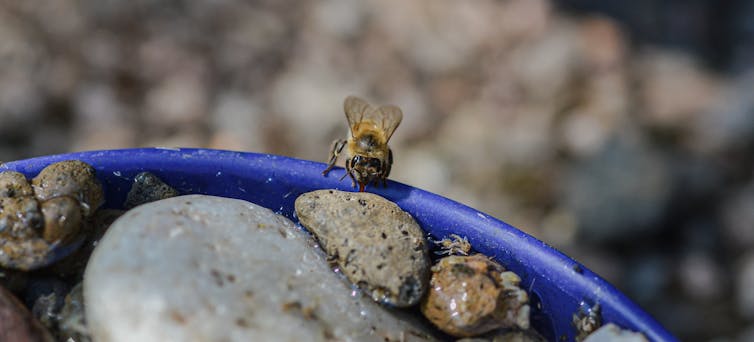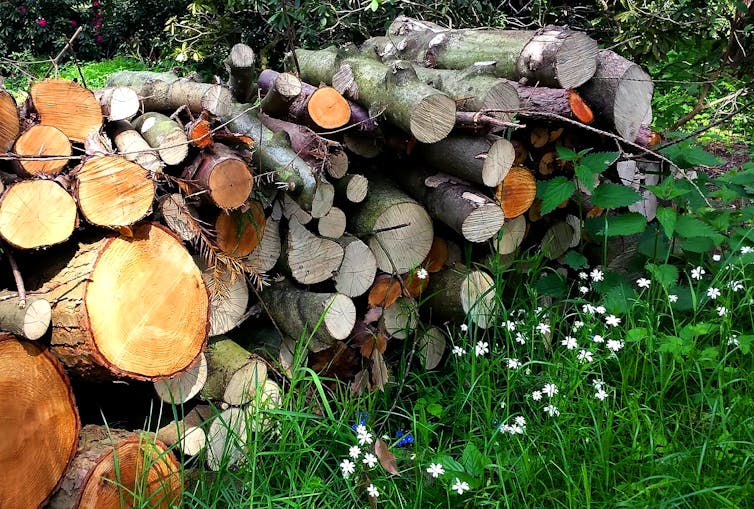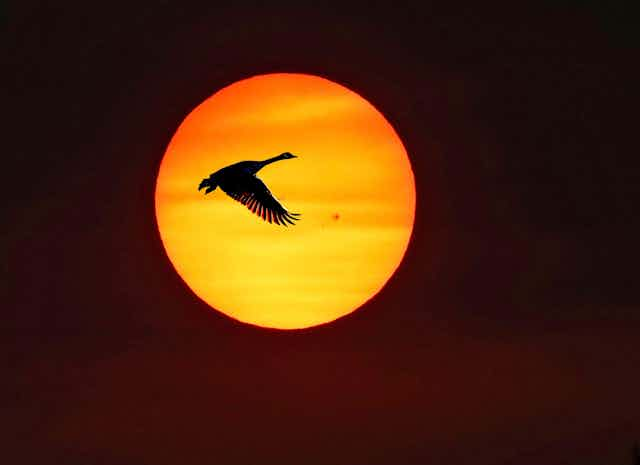Extremely hot weather is becoming more common. The top ten warmest years since 1884 all happened in the last two decades. While experts can help people take adequate precautions to beat the heat, who’s looking out for the rest of the animal kingdom?
Hot temperatures are uncomfortable and potentially deadly for wildlife too. Fortunately, you can give a helping hand with a few easy steps.
1. Provide water
Hot weather can be great for some wildlife. Butterfly populations in the UK tend to bounce back from hot and dry summers, possibly because this increases the survival of their larvae.
But even heat-loving species can only thrive if they can also find enough to drink. Even if you don’t have a garden, putting out a shallow dish of water will benefit a wide variety of wildlife. Add marbles or stones to it so that butterflies and bees can climb out if they fall in.

A shallow dish on the ground might attract hedgehogs or foxes, and one placed higher up could serve as a makeshift birdbath. If you’re feeling more ambitious, you could create a miniature pond. It’s possible to make a simple one from an old washing-up bowl.
You don’t even need to dig a hole if you include a ramp from the ground. Add gravel and rocks, plus logs or larger stones, then fill with rainwater (a water butt is useful for collecting and storing it). Include a few pond plants, such as spiked water milfoil, to oxygenate the water. You can find these at your local garden centre.
Rare natterjack toads cannot detect new sources of water, so they can only find ponds they have visited before. But many other animals are able to sense sources of water from far away. That’s why it’s important to drain or cover paddling pools overnight to prevent any animals climbing in and drowning.
2. Provide shelter
It’s much cooler out of the sun. You can help animals by offering them somewhere cool to rest. A pile of logs in a shady corner will have places for insects to hide (and present a tasty snack bar for larger wildlife). Heatwaves are not the time to trim your garden either – leave any plants uncut. They’ll provide shelter, and food if they’ve gone to seed.

3. Provide food
Leaves, fruits, seeds and roots are all food for different animals to eat. But the hot weather will be making plants wilt. Make sure flowers and berry-producing plants survive the heatwave by keeping them well-watered. If you normally feed the birds, make sure your feeders are well stocked.
4. Create habitats
As well as helping animals in immediate heatwaves, you can also do things for the long term. Many UK species are on the move as the climate warms, shifting the areas they are usually found in. For example, between 1981 and 2000, European curlews (Europe’s largest and perhaps most distinctive wading bird with its curved, slender beak) moved 119 km north-east.
By analysing the movements of UK invertebrates over 40 years, scientists discovered that the species which eventually found new suitable habitats moved further than those which were restricted by fewer rarer habitats they depended on. You can help make more of these migrations a success by making your local area more accommodating for a wide range of species.
For example, plant bee-friendly flowers such as sage or lavender in window boxes and on balconies. If you have a lawn, why not turn it into a wildflower meadow? These habitats are more tolerant of drought the more species they contain. They mean better for wildlife and less mowing for you.
If you have the space, adding a pond will give refuge to amphibians like frogs and newts. Just make sure that at least one side is shallower to allow larger animals like squirrels or hedgehogs to climb out if they fall in.
Read more: How to make your lawn wildlife friendly all year round – tips from an ecologist
5. Reduce the heat
Compared to plants, surfaces like artificial lawns and concrete slabs absorb more heat in the day and release that heat to the air at night. When in the sun, concrete paving can be more than 20°C hotter than grass – too hot for us or wildlife to stand on. So why not replace hard and artificial surfaces with plants?
Shading from trees can reduce surface temperatures by around 10°C, so planting a native tree in your garden would cool you and wildlife. The elder (Sambucus nigra) in my garden provides berries and flowers which are great for wildlife, and grows a couple of metres each year.
Elders can also be pruned to suit the size of your garden too – either as a bush or a tree. If you plant one soon it could be offering shade to your garden and shelter for nesting birds by next summer.

Don’t have time to read about climate change as much as you’d like?
Get a weekly roundup in your inbox instead. Every Wednesday, The Conversation’s environment editor writes Imagine, a short email that goes a little deeper into just one climate issue. Join the 10,000+ readers who’ve subscribed so far.

